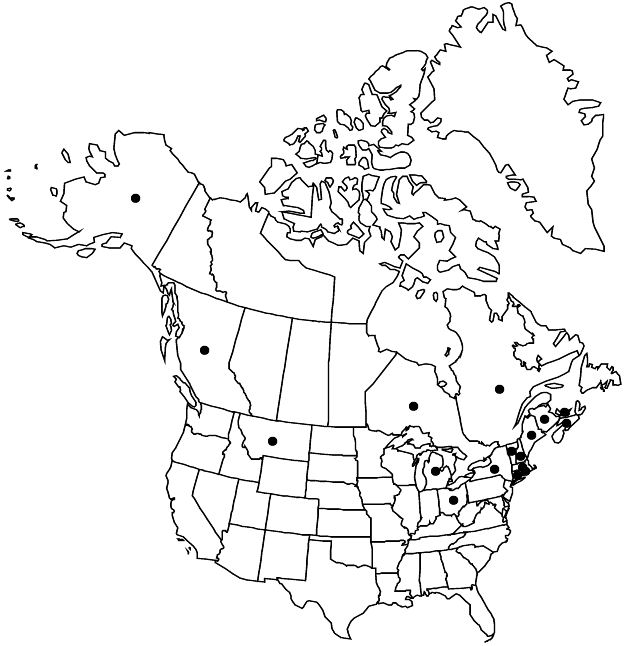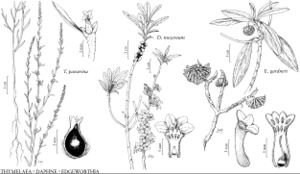Daphne mezereum
Sp. Pl. 1: 356. 1753.
Common names: Mezereon paradise-plant
IllustratedIntroduced
Treatment appears in FNA Volume 6. Treatment on page 385.
Shrubs to 1 m; branches glabrescent. Leaves deciduous, sessile; blade oblong to lanceolate, 3–8 × 1–2.5 cm, membranous, adaxial surface matte. Inflorescences 2–4-flowered. Flowers fragrant, sessile, appearing before leaves, clustered in axils of previous year’s growth; hypanthium pink, red, or white, tubular, 5–8 mm, sericeous; calyx lobes ovate or obtuse to rounded, 3–5 mm. Drupes red or yellow. 2n = 18.
Phenology: Flowering summer (Jun–Aug).
Habitat: Cool, damp woods, especially on limestone
Elevation: 0–300 m
Distribution

Introduced; B.C., N.B., N.S., Ont., P.E.I., Que., Alaska, Conn., Maine, Mass., Mich., Mont., N.H., N.Y., Ohio, R.I., Vt., Europe, w, c Asia.
Discussion
Daphne mezereum was used in the herbal pharmacopoeia as a purgative. It contains daphnin and is highly poisonous.
Selected References
None.
Lower Taxa
None.
